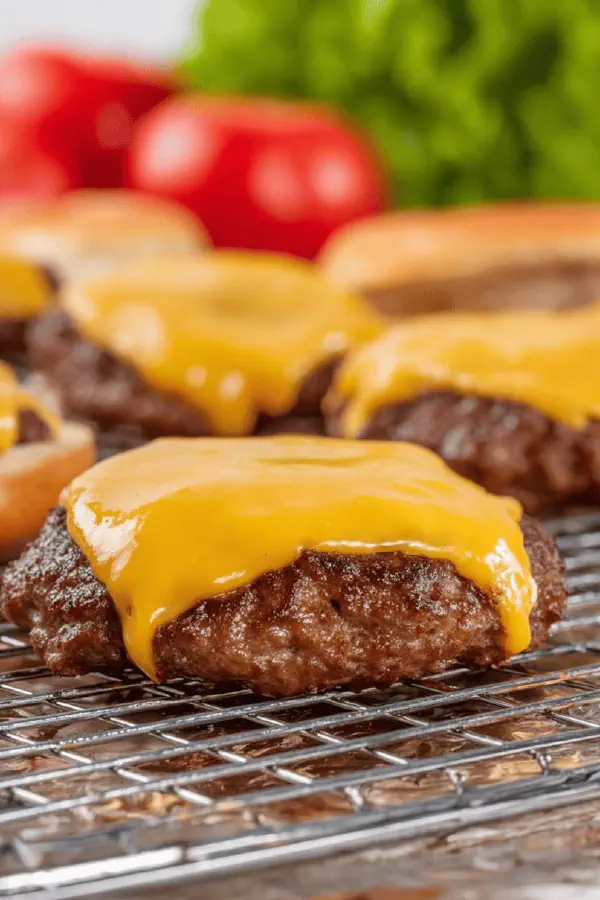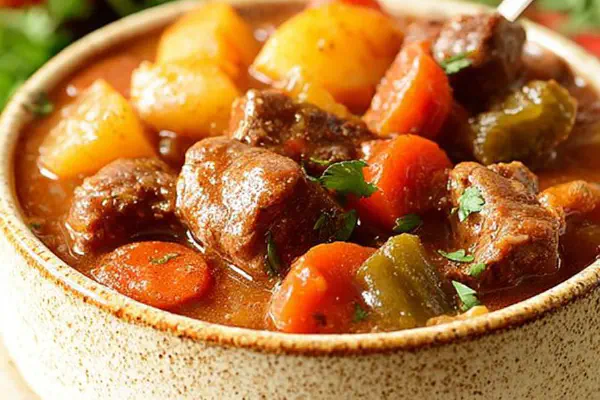Featured Recipe
Oven-Baked Beef Patties

By Kate
"
Ground beef shaped into thick patties, baked on a raised rack to drain fat and build crust. Mixed with mayo and Worcestershire for moisture and umami. Seasoned with salt, smoked paprika, onion granules, and cracked pepper to punch up flavor. Cheese added near end to melt without drying out the meat. Finished once internal temp hits 160 Fahrenheit for safety and texture. Six servings, moderate fat, protein-packed. Simple, hands-off cooking with an eye on technique and texture.
"
Prep:
15 min
Cook:
22 min
Total:
37 min
Serves:
6 servings
beef
patties
baking
cheese
Introduction
Baking beef patties might sound lazy, but done right it’s a straightforward way to trap flavor and lock in texture. The wire rack above a foil-lined sheet pan is your best friend for crust without grease sog. Mayo mixes into the beef to keep it juicy while Worcestershire hits umami layers that dry seasoning lacks. I swapped garlic and onion powders for smoked paprika and onion granules, layering in complexity and a mild charred flavor instead of raw powders. Flipping only once is the golden rule. Over handling kills crust development and makes patties tough. Cheese slid on near the end gets melty but doesn’t smother the heat, letting patties finish cooking cleanly. Watch the surface carefully—the telltale caramelizing edges and faint sputter of dripping fat. Learning these signs means no thermometer needed. Steady oven, simple seasoning, focused finishing steps. You get six juicy, slightly smoky patties with a crispy teeth-friendly exterior that’s not soaked in grease.
Ingredients
About the ingredients
Aim for 85% lean beef or slightly fattier. Too lean and the patties dry out fast; too fatty and you risk flare-ups or greasy results. Mayonnaise is more than binder—moisture carrier and fat for carry-through richness. Substitutes like sour cream or full-fat Greek yogurt work similarly but may alter tang slightly. Worcestershire sauce replaces A-1 with comparable savory notes; if soy sauce or tamari is your fridge standby, add a tiny vinegar splash for brightness. Spices matter: smoked paprika does double duty as color and flavor booster. Onion granules and fresh cracked black pepper hit texture and intensity differently than powder. Fresh grinding your pepper elevates aroma and bite. Cheese choice defines finish—sharp cheddar slices melt evenly and cut fat, while processed slices melt smoother but taste bland. Adjust to what’s on hand, but season boldly. Salt and pepper must never be neglected—season inside mix not just the surface. It’s the secret to even flavor throughout.
Method
Setup
- Heat oven to 380 Fahrenheit — hotter oven jump-starts crust build. Line rimmed baking tray with foil; set a wire rack on top. Elevates patties so fat drips away, avoids greasy surfaces. Rack crucial—skip and burgers stew in grease, no crust forms.
- In bowl, dump beef, mayo, Worcestershire, smoked paprika, onion granules, salt, and cracked pepper. Fold ingredients gently. Overmixing toughens meat; aim for uniform season but keep it loose. Uniform patties hold shape better, cook evenly.
- Divide mix into 6 equal balls. Shape into 3¼ to 4 inch wide patties, about ¾ inch thick—thicker than usual. Thin patties shrink and dry fast. Space patties apart on wire rack; crowding traps steam, kills crust development.
- Slide tray into oven. Let sizzle for 17 minutes. Listen — quiet pop and faint grease hiss signal fat rendering. Edges will firm up, surface browning lightly. Do not disturb or flip too soon. Patience builds crust.
- Flip carefully using spatula; crust now formed, flipping seals new crust on other side. Return to oven for 7 minutes. Last 2 minutes: lay cheddar slice atop each patty, cheese melts gently but avoids drying. Watch—cheese bubbling and soft is your visual cue.
- Check internal temperature, aim for 160 Fahrenheit. If no thermometer, slight spring under finger means done; juices run clear. Undercooked means risky, overbaked turns dry. Let rest 3 minutes on rack—resting reabsorbs juice, firms texture.
- Assemble with preferred buns, raw sliced onion, pickles, mustard or ketchup—or thick tomato slices and crisp lettuce for crunch. Avoid watery toppings that swamp that crust.
- Mayonnaise can swap with sour cream or Greek yogurt for moisture. Worcestershire can be replaced with soy sauce diluted with a pinch of vinegar. Smoked paprika adds depth; if unavailable, cayenne powder or plain paprika work but lose some smoky punch. Use fresh cracked pepper—no pre-ground—bigger flavor impact and crunch in crust.
- If no wire rack, improvise with crumpled foil strips to let fat drain away. Skip mayonnaise for leaner patties, but expect drier texture; compensate with a dash of oil when cooking.
- Avoid pressing patties while baking—traps juices inside. Flip swiftly but gently to avoid breaking crust.
- Oven temps vary. Use visual cues—edges browned, slight sizzle from fat dripping, cheese melting evenness—to gauge doneness.
Mixing
Forming
Cooking Part One
Flip and Cheese
Doneness
Serving
Substitutions and Tips
Technique Tips
Heat oven fully before starting. Wire rack elevates patties so rendered fat drains away; builds that coveted crust instead of stewing in its own grease. Mixing should be gentle yet thorough to distribute mayo and spices with minimal meat breakage for tenderness. Patties thicker than a half inch hold juiciness better. Time cues are guidelines—visual signs like browning edges, sizzling sounds, and cheese bubbling tell the real story. Flip only once, carefully, to keep crust intact and cook evenly. Using an instant-read thermometer confirms safe internal temp but finger test works for practiced cooks—pressed patties firm with slight give indicate well-done. Rest briefly before serving to lock juices back inside. Drafting steps with sensory signals and alternatives helps adapt for varying ovens and kitchen gear. Don’t crowd patties, avoid repetitive flips, and respect resting time. That’s the real foundation of consistent results.
Chef's Notes
- 💡 Patty thickness matters. A thicker patty cooks better; holds juices inside. Aim for ¾ inch. Avoid pressing while baking. It squishes juices out.
- 💡 Mayo in beef? Yes. It adds moisture and richness. Alternatives exist, like Greek yogurt or sour cream. Adjust taste, still keep juiciness.
- 💡 Check your cheese choice. Sharp cheddar? Great melt and flavor. Processed cheese? Smoother but less taste. Pick depending on your palate.
- 💡 Step cues are key. Listen for sizzle. Visually check. Look for browned edges, bubbling cheese. If you rely on time alone, chances are you'll overcook.
- 💡 Patience on flips. Only flip once to keep crust intact. If rushed, risk tearing. Let the crust form first, then carefully flip.
Kitchen Wisdom
What if patties are undercooked?
Always aim for 160 Fahrenheit internal temp. If no thermometer, slight spring under finger, juices clear.
What to do if patties are dry?
Use fattier beef, 85% lean or more. If too lean? Consider adding oil or mayo. Helps with moisture.
Can I store leftovers?
Yes, fridge for up to four days. Freeze too, wrap well. But expect some texture change once thawed.
What if I don’t have a wire rack?
Can improvise, crumpled foil works. Elevates patties, fat drains away; crust forms. Avoid stewing in grease.



